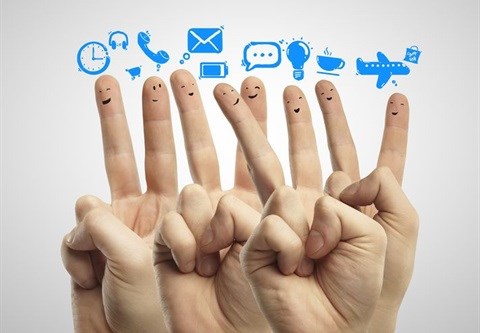
Top stories




ESG & SustainabilityBeards With Heart: dotsure.co.za rallies corporate volunteers for the GRSPCA - George
dotsure 1 day
The difference is that while the wheel was extremely localised until it took you somewhere else, this incredible international network was linking everyone and everything with the click of a button.
And in the beginning, it was amazing. No more delayed gratification in waiting on that magazine from abroad to know what was going on over there - you could just have a look online. And with the rise of social media, that delivery became instant: you could have a look at what your favourite celebrity was buying right this minute. Which is perfectly fine if you only follow one celebrity, even 10 could be manageable. But with social gluttony and the fear of not being in the know, most people ended up following thousands of apparent influencers until they realised that the sheer volume of information was more than they could bear to handle: their eyes were too big for their social stomachs.

It was not only the volume, it was also the diversity. Influencers can only influence if they maintain a certain level of originality; therefore they all try to do something different, often and as much as possible, until the followers of all these influencers are so confused by all the conflicting information that they start to wear their pants on their heads or some proverbial version of that anyway. And frankly trying to stay up to speed with what everyone is telling you to do is exhausting.
Because of this cloud of overwhelm, this availability of vast knowledge, a new kind of consumer was born. The information overload has created an educated consumer who, instead of trying to attain all these it-things and emulate all these it-people, distil all of the influences into a new style unique to themselves.
This need for distilling information is a very real one. You can only read so many newsletters, follow so many blogs and engage with a very finite number of social media posts, even if you subscribe to thousands. Sitting under a large tree filled with birds, you can only hear the birds that you focus on. It's not necessarily the ones that chirp the loudest, it's the ones you choose to listen to. Otherwise it's just a cacophony of tweets.
Twitter has caught onto this a couple of years ago already by developing their lists capability where you can choose whose information to see without having to unfollow the masses of influencers (or noise makers). Listing the real influencers is like putting the kids in the other room and closing the door so that you can hear the grown-ups speak.
The educated consumer doesn't only want to listen though. He wants to be heard as well. They don't want to be told what to do, who to like and what to buy any more. This consumer wants a customised solution: they want this sofa, with those legs, in that fabric, in a specific size. They have found their individuality in the noise and distilled it all into their take on things. And being able to offer this customised solution is what is going to make good brands great.
The challenge then in design is finding those customisation capabilities in consumer products and making them viable.
So how do YOU then plan to maximise customisation? That's the only question you should be asking right now.
